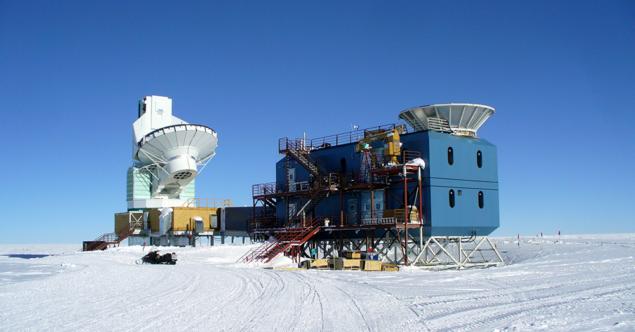
The BICEP/Keck collaboration has published the strongest constraints to date on primordial gravitational waves, ruling out parameter space for models of inflation in the early universe (Phys. Rev. Lett. 2021 127 151301). A conjectured rapid expansion of the universe during the first fraction of a second of its existence, inflation was first proposed in the early 1980s to explain the surprising uniformity of the universe over scales which should not otherwise have been connected, and may have left an imprint in the polarisation of the cosmic-microwave background (CMB). Despite a high-profile false detection of gravitational-wave-induced “B-modes” by BICEP in 2014, which was soon explained as a mis-modelling of the galactic-dust foreground, the search for primordial gravitational waves remains one of the most promising avenues to study particle physics at extremely high energies, as inflation is thought to require a particle-physics explanation such as the scalar “inflaton” field proposed by Alan Guth.
Certain ‘standard’ types of inflation are now clearly disfavoured
Kai Schmitz
In its latest publication, the BICEP/Keck collaboration has managed to significantly improve the upper bound on the strength of gravitational waves produced during the epoch of inflation. “This is important for theorists because it further constrains the allowed range of viable models of inflation, and certain ‘standard’ types of models are now clearly disfavoured,” explains CERN theorist Kai Schmitz. “It’s also a great experimental achievement because it demonstrates that the sources of systematic uncertainties such as dust emission in our Milky Way are under good control. That’s a good sign for future observations.”
The BICEP/Keck collaboration searches for the imprint of gravitational waves in the polarisation pattern of the CMB, emitted 380,000 years after the Big Bang. Telescopes at the South Pole receive incoming CMB photons and focus them through plastic lenses onto detectors in the focal plane which are cooled to 300 mK, explains principal investigator Clem Pryke of the University of Minnesota. As the telescopes scan the sky they record the tiny changes in temperature due to the intensity of the incoming microwaves. The detectors are arranged in pairs with each half sensitive to one of two orthogonal linear polarisation components. The telescopes take their best data during the six-month long Antarctic night, during which intrepid “winter-overs” maintain the detectors and upload data via satellite to the US for further analysis.
“The big change since 2014 was to make measurements in multiple frequency bands to allow the removal of the galactic foreground,” says Pryke. “Back then we had data only at 150 GHz and were relying on models and projections of the galactic foreground – models which turned out to be optimistic as far as the dust is concerned. Now we have super-deep maps at 95, 150 and 220 GHz allowing us to accurately remove the dust component.”
The current analysis uses data recorded by BICEP2, the Keck Array and BICEP3 up to 2018. Since then, the collaboration has installed a new more capable telescope platform called the BICEP Array designed to increase sensitivity to primordial gravitational waves by a factor of three, in collaboration with a large-aperture telescope at the South Pole called SPT3G. With 21 telescopes at the South Pole and in the Chilean Atacama desert, the proposed CMB Stage-4 project plans to improve sensitivity by a further factor of six in the 2030s.








